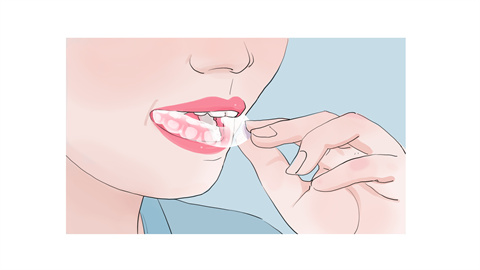What is the optimal age for early orthodontic treatment?
Generally speaking, there is no universally defined best age for early intervention. Early intervention refers to early correction and mainly includes two areas in the medical field: oral orthodontics and pediatric rehabilitation. The early orthodontic correction age for primary dentition is 3-6 years old, for mixed dentition it is 6-12 years old, and for early permanent dentition it is 12-15 years old. The age for postural and motor function correction is 0-3 years old, and for speech and cognitive correction it is 1-6 years old. Detailed analysis is as follows:

I. Age for Early Orthodontic Intervention
1. Primary Dentition Period
Most permanent teeth have erupted, and the development of dental arches and jawbones is largely completed, although there remains some growth potential. For more complex dental and jaw deformities, such as skeletal malocclusion accompanied by misaligned teeth, 3-6 years of age is considered the optimal period for orthodontic treatment. Fixed orthodontic appliances can be used to comprehensively adjust tooth positions by applying orthodontic forces, while utilizing the remaining jawbone growth potential to improve the relationship between the jaws and achieve effective correction.
2. Mixed Dentition Period
This is a stage of rapid development of children's jaws and dental arches and the beginning of permanent teeth gradually replacing primary teeth. For dental crowding or abnormal eruption of individual permanent teeth, 6-12 years of age is an appropriate stage for early correction. For example, premature loss of primary teeth may cause adjacent teeth to tilt into the gap, affecting the normal eruption of permanent teeth. At this time, space maintainers can be used to reserve sufficient space for the eruption of permanent teeth.
3. Early Permanent Dentition Period
At 12-15 years of age, early intervention mainly targets不良 oral habits and simple dental-jaw deformities. Many不良 oral habits, such as thumb sucking, lip biting, and mouth breathing, are common during this stage. If these habits are not corrected timely, they may negatively affect the eruption of subsequent permanent teeth and jaw development. For example, thumb sucking may lead to protrusion of the upper front teeth or open bite. Therefore, early intervention during the primary dentition period can utilize the elasticity and growth potential of children's oral tissues to effectively correct不良 habits and guide normal tooth and jaw development through simple orthodontic appliances.
II. Age for Early Intervention in Pediatric Rehabilitation
1. Posture and Motor Function Correction
Children aged 0-3 are in a stage of rapid physical and neurological development, with strong plasticity. For congenital postural abnormalities, such as spinal deformities or clubfoot, or delayed motor development, such as delays in gross motor skills like lifting the head, rolling over, sitting, and crawling, the earlier the detection and initiation of correction, the better the outcome. For example, congenital clubfoot can begin treatment immediately after birth through manual correction and plaster immobilization, effectively improving foot deformity. In terms of motor function correction, early rehabilitation training, such as passive movement training and sensory integration training conducted by physical therapists, can stimulate the child's nervous system and promote normal motor development.
2. Speech and Cognitive Correction
1-3 years of age is a critical period for children's language development, during which they begin to learn pronunciation, vocabulary, and simple sentences. If children show signs of delayed language development, such as late talking or unclear articulation, timely speech correction should be conducted. In terms of cognitive correction, 3-6 years of age is a period of rapid cognitive development. For children with cognitive impairments, early cognitive rehabilitation training, such as attention training, memory training, and thinking skills training, can fully utilize brain plasticity to improve cognitive function.
During the early intervention period, it is important to maintain oral hygiene, wear orthodontic appliances as directed by the physician, and attend regular follow-up visits. In the field of rehabilitation, it is also important to cooperate with training, ensure adequate rest and nutrition.




